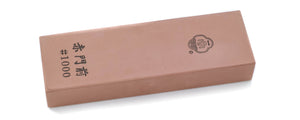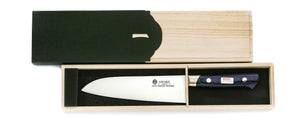
This is a fine finishing stone among general finishing stones.It is ideal for sharp cutting edges or when you want to polish steel to a mirror-like finish.
It is an intermediate softness among the Kirameki series finishing stones, but it has the resilient softness characteristic of the resinoid type.
It makes the base metal part hazy (Kasumi) and the steel shines well. That makes border of the blade is clear, so it is especially suitable for finish sharpening of steel Japanese knives.
It can be used by just pouring water on it.
With base, it can be used stably.
Product No:14k8000-d
Size without base : 70x205x25mm
Grit Size: #8000
Nagura Stone and Wooden Base are included.
*Nagura Stone (or Dressing Stone) is a small stone for creating slurry before sharpening a knife and erasing the metal attached on the whetstone after the sharpening.
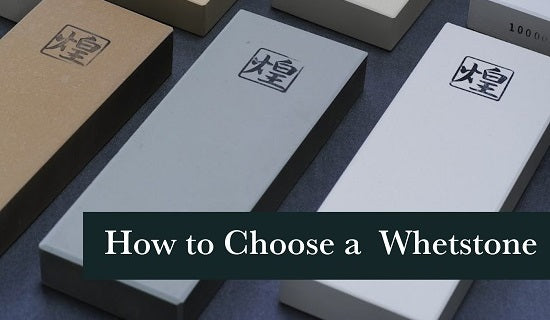
How to Choose a Whetstone
Sharpening your knives is as important as using them, but there's so many whetstones to pick from!
Here's how to buy your first.
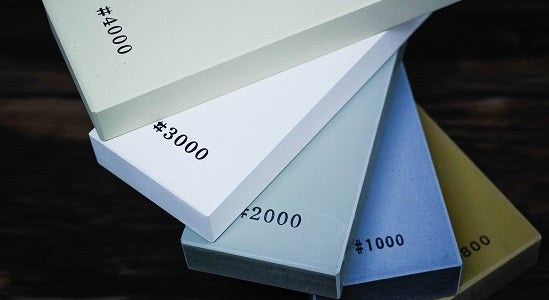
Fine Stone
The number is 2000 - 10000 grit and can go even further beyond.
This type of stone is used for the final process of sharpening. You may seem them sometimes referred to as "finishing stones."
It is so fine that can sharpening using this whetstone can even remove the scratches from a medium stone.
It is often used for Japanese knives (such as Yanagiba knives), which require extremely delicate sharpness.
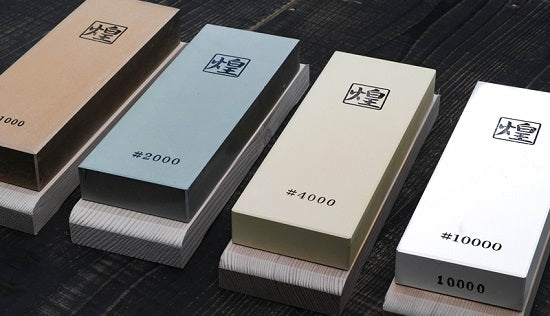
Resinoid
Manufacturing Method
Synthetic resins such as phenol and epoxy are hardened by baking at a relatively low temperature of around 200℃. The stone has low water absorbency, so there is no need to soak it in water before sharpening. The elasticity of the whetstone makes it easy to hit the blade when sharpening and produces a fine, fine finish. This method is suitable for medium to fine stones.
A knife store that has supported the history of knives and food culture in Japan.
Sono passati 600 anni dalla nascita dell'arte della spada nella regione giapponese di Sakai. La Sakai Ichimonji Mitsuhide e i suoi artigiani continuano a costruire su questa eredità producendo le migliori lame del Giappone.
È qui che è nata la cultura di completare un piatto di sashimi "tagliando e basta" e la cultura di esprimere l'affilatura come "gusto".
Da 70 anni colleghiamo lo spirito degli artigiani di Sakai con la passione degli chef nel quartiere dello shopping di attrezzature da cucina di Osaka, noto come la cucina del Giappone.
Siamo molto felici che i nostri coltelli possano essere utilizzati da persone di tutto il mondo.
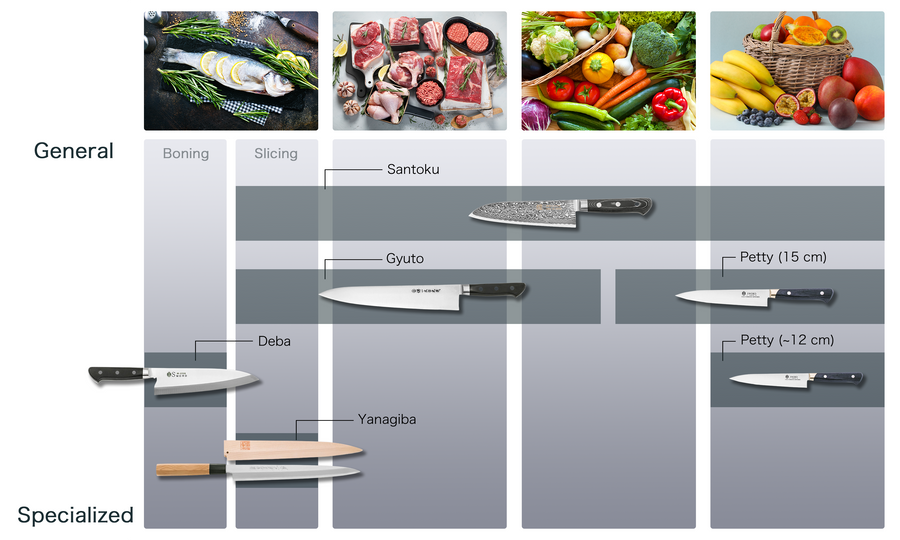
Come Scegliere un Coltello da Cucina Giapponese - Guida per Principianti
I coltelli da cucina giapponesi sono famosi per il loro design, la loro storia e la loro straordinaria affilatezza. Questa guida vi aiuterà a scegliere il coltello più adatto alle vostre esigenze.



























